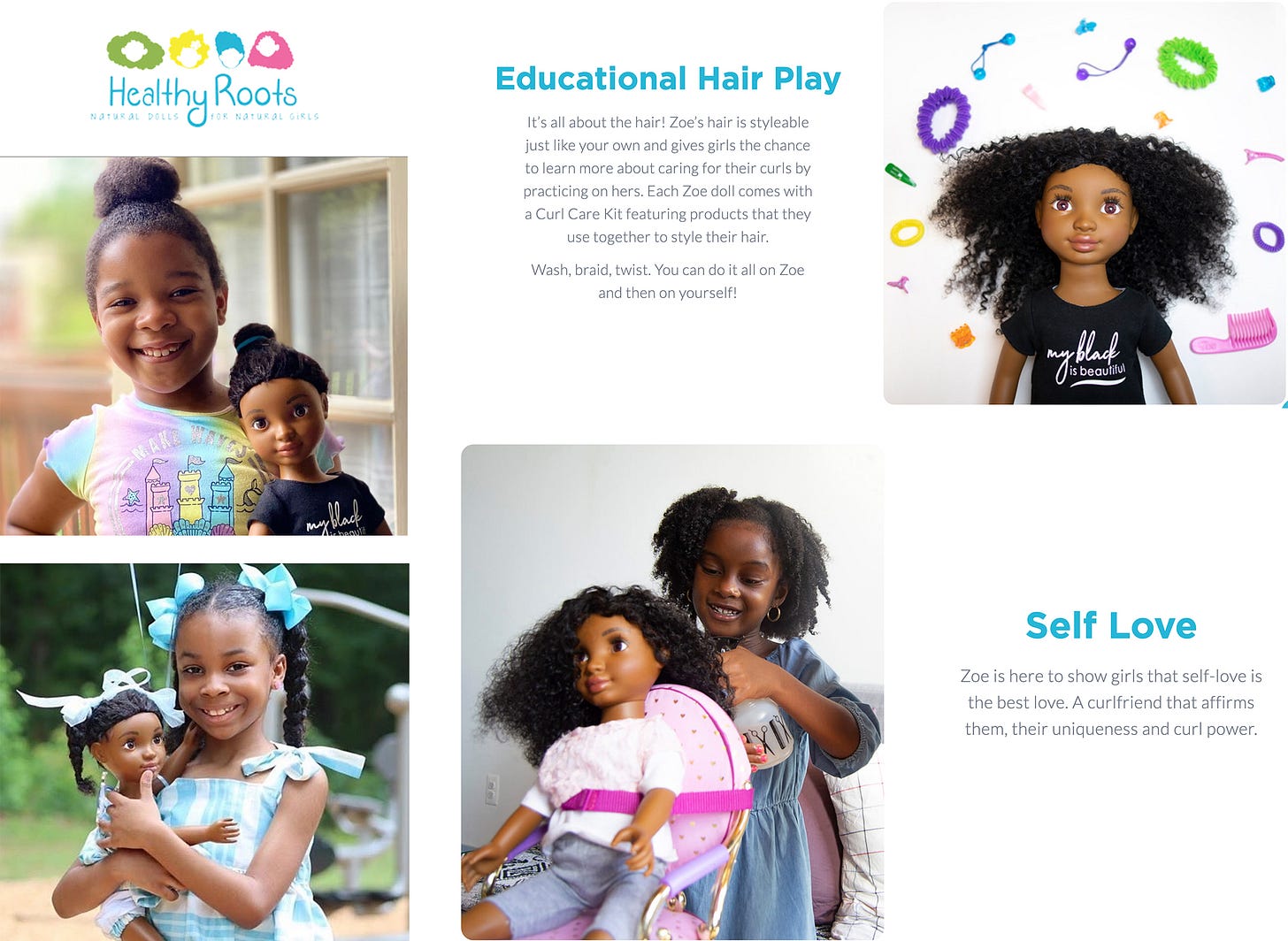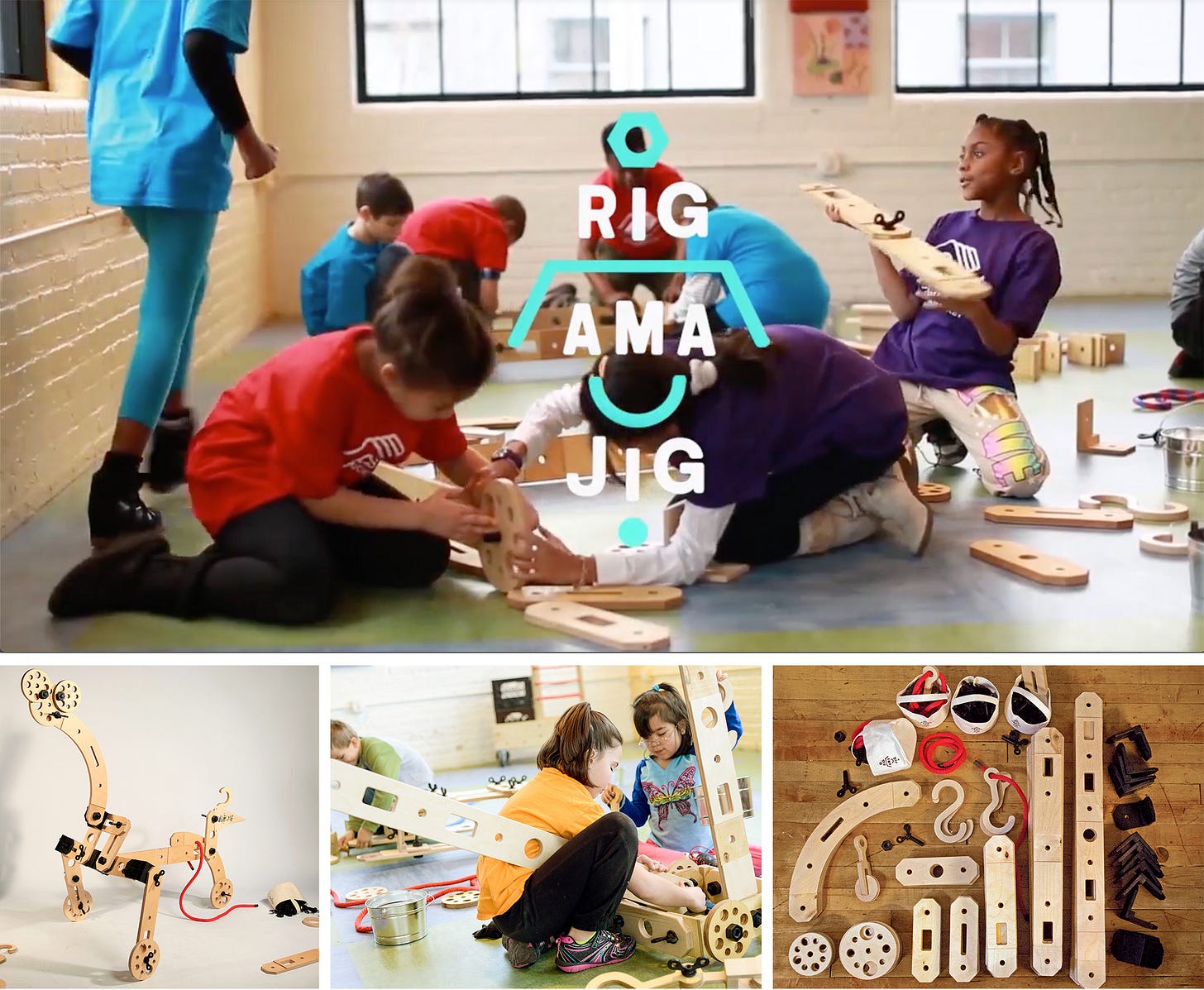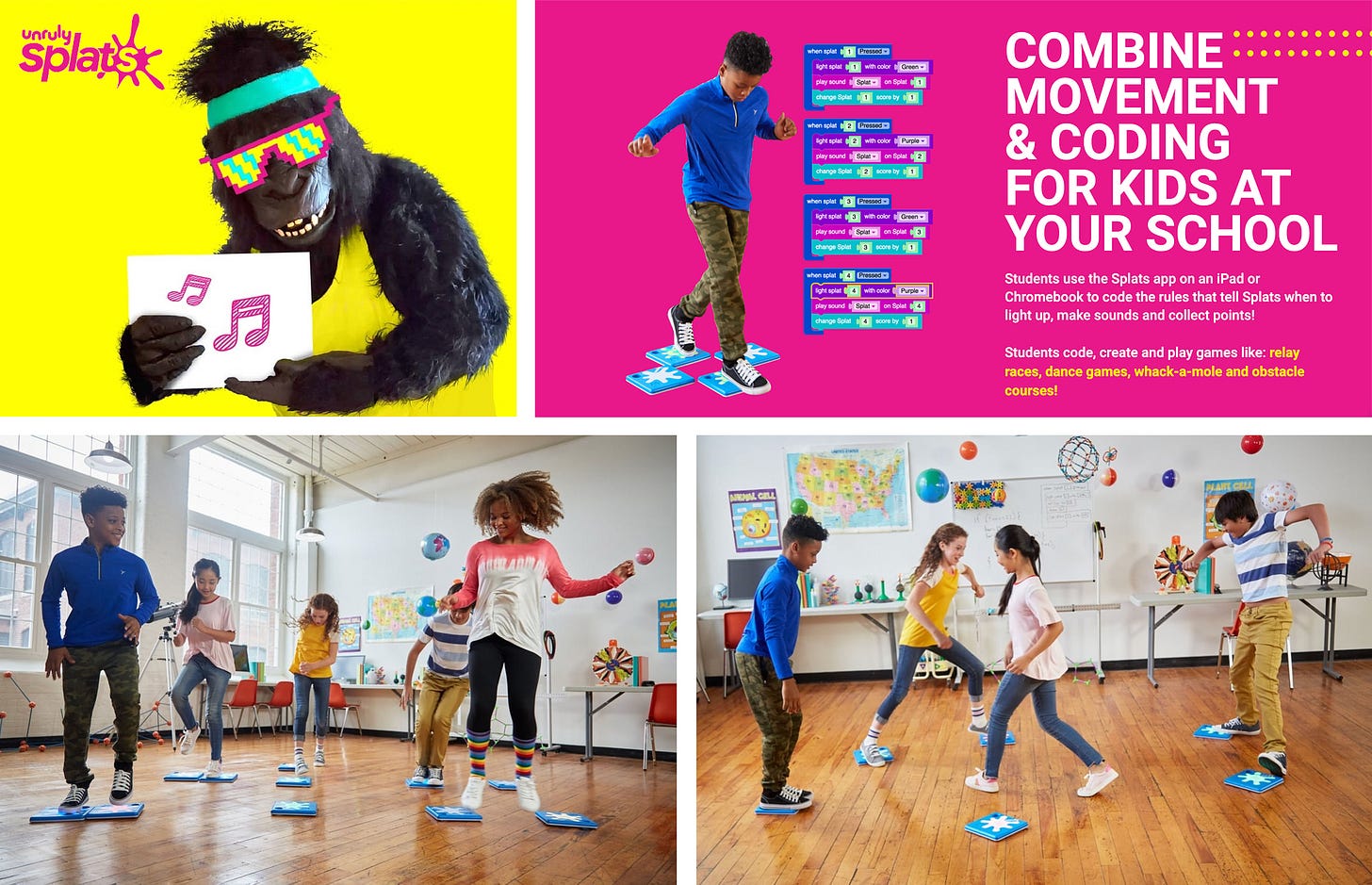
A newsletter about branding, startups, and mission-driven companies aiming to make the world a better place.
👋 Welcome to issue #8 of For The Love, I’m so happy to have you all here!
Today we’ll be discussing:
How brands are building kids’ toys so the future doesn’t suck.
A roundup of things that launched this week, including new and improved gummy bears.
Mattress startups live in a world without sheets.
If you have any smart friends that like learning about new brands, DTC trends, and hot takes on ads, please share For The Love.
✌For The Love of Doing Good
“The reason I design for children is I’m designing for people...These are the people that are going to make the world suck or not suck. Good toys make good people.” — Cas Holman
Toys and play are an integral part of childhood development. Patterns learned in play set the stage for how children mature, how they interact, and how they approach the world throughout their lives.
According to Stevanne Auerbach, Ph.D. (aka Dr. Toy):
“Each new play experience helps to turn the key and unlock doors to experiences that influence mental, social and other aspects of the child's fullest development. Play is the child's work. Toys are important tools for playing and learning. As children grow and become more involved in play, the right toys support and extend learning...Play helps children to expand their curiosity, solve problems, and gain many different skills.”
The key phrase here is “the right toys.” Toys that inspire imagination, critical thinking, and possibility. Most toys from the last half-century are created with a desired outcome in mind—the right way to build, the right way to learn, or the right way to look, but that’s starting to change.
Play For Inclusivity
Yelitsa Jean-Charles, the founder of Healthy Roots Dolls, learned from a young age, how impactful only being exposed to dolls that looked a certain way could be. When at the age of seven her parents bought her a Black Barbie, they were met with tears. Why? To Yelitsa, it wasn’t “the real Barbie, because it wasn’t the ‘pretty’ Barbie. How was I to know any better when the only images I saw as beautiful were the blue-eyed, blonde Barbie dolls.”
This along with the realization that she had been treating her hair for so long that she didn’t know what her natural hair looked like, showed her the lasting impact that the lack of representation in toys had on her.
She told me it quickly became clear “how influential toys can be to children’s development...we have to have diverse play because children can be misinformed about our culture and we have to create positive representation to counteract that.”
So Yelitsa created Zoe—a doll that’s not only Black but also has textured curly hair, for children to style and experiment with.
“I’m focusing on representation to influence the next generation...we need to be aware of the dialogue that we’re producing and the way it can inspire or influence people. I want to be a positive influence.”
And this is just the beginning, her mission is to bring products “to the toy aisle that celebrate children around the world.”
Healthy Roots Dolls’ branding reflects this mission in many ways:
“I didn’t want to force stereotypes or tropes so I never wanted to gender things like the rest of the toy industry. Our primary color is blue. It’s soft and friendly, and the logo is a representative of all the different people I wanted to feel included in the brand—different hair types and facial features.”
And the name Healthy Roots signifies “cultural ties—building strong ties with people’s cultures and celebrating people’s differences.”
The brand is about thinking broadly and inclusively. Shedding the idea that there is one way to look, and one way to think, not only benefiting children’s own self-confidence but also making them more empathetic to others.

Play For Discovery
Thinking broadly is also what most inspires Cas Holman, creator of the Rigamajig and other interactive, unstructured play inspiring, gender-neutral toys. Or as she calls them “tools for imagination.”
As Colman explained to Dwell:
“I also see a correlation between the way we educate and the options for play that surround kids. Kids are supposed to ‘learn to the test’—they are rewarded for right answers. There isn’t room for exploration or daydreaming in their learning. So when they play, they will seek a similar experience to feel successful, which is more easily found in a video game than drawing, pretending with friends, or staring at the clouds, or running around in the woods. In playing with digital technology, we’re giving them habits of extrinsic motivation and quick rewards...I’m not a Luddite, but I see my role in the market as balancing what the toy industry has decided to offer kids. And right now, they need to be trusted to make their own play. So I strive to give them tools to do that.”
Instead of building toys for children to achieve a certain goal, she aspires to build tools for them to create their own goals (and their own toys). And also to empower them in the process. Instead of plastic, she uses wood—“Materiality communicates a perception of value...I want them to interact with things that are well made, well designed, and communicate to them that they are worthy of solid, ‘real’ things.”
This trust in children, and her desire to inspire rather than direct, is reflected through branding that’s more sophisticated and minimal than most children’s brands. With a clean, playful logo, and gender-neutral colors, she creates a canvas for creativity.
“I use color very carefully... Color is loaded with meaning and symbolism, and I want the imagination to have more room. I always say, ‘The less I design, the more room the child has to design.’ And by that, I also mean that the object can support what the play needs it to be. But color can also be beautiful and inspire—not just limit—stories, so I run with it sometimes.”
Colman’s toys empower children. She trusts them, not only with well-made things but also with their ideas. This builds confidence and agency and enables children to think creatively and be open to possibility, not only for play but for the rest of their lives.

Play For Creativity
Not all technology-focused toys are inhibiting free-thinking. Unruly Splats is “an electronic playground” that combines “active play and open-ended creative learning,” i.e. learning to code in the form of playtime.
As Bryanne Leeming, the brand’s founder, told me:
“I felt that the current ways to teach coding were a solitary activity and mostly sedentary. Kids are really engaged when they're playing with other kids and that’s not how we've designed learning today….We build educational experiences—kids have way better ideas for games than I do—I need to enable them to code it. We put in different lessons but all of them are built to inspire creativity in them and their teachers.”
In addition to learning to code, this open-ended process also teaches children relationship building (which sometimes technology actively works against) and collaboration. And, they get some exercise in the process.
Like the previous brands, Unruly Splat’s branding is gender-neutral, through the use of a range of bright colors, to “attract boys and girls in the same way—all-inclusive, all kinds of play, all kinds of making.”
While Bryanne believes strongly in the value of coding knowledge, it’s the process of learning through trial-and-error and thinking creatively, that sets Unruly Splats apart.

Play For The Future
Society is full of limitations. Restrictions and directions towards what is “right” and what is “wrong.” The pressures to be a certain way, and to think a certain way are present from childhood and only get more intense as we grow older. But iterating and evolving, and importantly, thinking differently, is the only path to innovation.
Don’t take my word for it, listen to Albert Einstein:
“We can not solve our problems with the same thinking we used when we created them.”
Or James Dyson:
“What I often do is just think of a completely obtuse thing to do, almost the wrong thing to do. That often works because you start a different approach, something no one has tried.”
And who could forget Apple’s Think Different Campaign:
“Here's to the crazy ones. The misfits. The rebels. The troublemakers. The round pegs in the square holes. The ones who see things differently. They're not fond of rules. And they have no respect for the status quo. You can quote them, disagree with them, glorify or vilify them. About the only thing you can't do is ignore them. Because they change things. They push the human race forward. And while some may see them as the crazy ones, we see genius. Because the people who are crazy enough to think they can change the world, are the ones who do.”
You get the point. If our most inventive thinkers, the ones with world-changing ideas, approach thought from this perspective, why do we treat learning in such a binary way—with one right answer?
Toys, at their best, are tools for discovery. These brands are saying there’s more than one way to be beautiful, more than one way to build, and more than one way to learn. They make toys, not to shape the mind, but to expand it.
And it is with this type of thinking—expansive, curious, and open-minded—that we, and generations to come, can build a world that doesn’t suck.
“Adults absolutely need more play! As adults, we often need to be given permission—courage which really comes from within—to play. I suspect we think we are supposed to act a certain way—’like an adult,’—so don’t let ourselves be present and inspired and behave outside the social contract of ‘adult.’...There are opportunities for play everywhere. Curiosity is playful; ideas can be playful; asking questions can be playful.” — Cas Holman
🔥 For The Love of Newness
Behave is making better gummy candy for people—it’s low-sugar, all-natural, and bear-shaped.
And Sundays is making better food for dogs—it’s healthy, easy, and air-dried.
Usual Wines launched Usual Spritz that’s “like a grown up White Claw.”
Anti Social Social Club collaborated with Sanrio (Spoiler alert: It’s very cute).
🔍 For The Love of the Details
All the mattress startups know you like reading in bed.
But have you considered reading in bed *check’s notes* without sheets?

Is this woman sitting on her bare Allswell mattress under a blanket? And why is she wearing a sweater? Did she sleep in the sweater and no sheets? Or is this a daytime mid-laundry read during a cycle that for some reason didn’t include the pillowcases?

Casper suggests doubling down on pillows and blankets to perfect the no sheet look.

Avocado thinks your pet should get in on the no sheet action.

Or your partner works too.

And Tuft & Needle? Well, they think a straw hat, sunglasses, and a tropical drink will make you forget you’re sitting on a bare mattress.

It looks like they do recommend a sheet for painting in bed. So there’s that.
Thank you for being part of For The Love!
A few more things...
Is there a topic you think I should cover? Or a funny ad I can dissect? I’d love to hear from you! You can email me at info@ajasinger.com, respond to this email, or drop it in the comments ⬇
Know someone who’d enjoy this newsletter?
Was this newsletter forwarded to you?
Written by Aja Singer, a brand and creative strategy consultant interested in all things startup, mission-driven, and community. Born in Canada. Based in Brooklyn. You can also find me on Instagram and Twitter.



